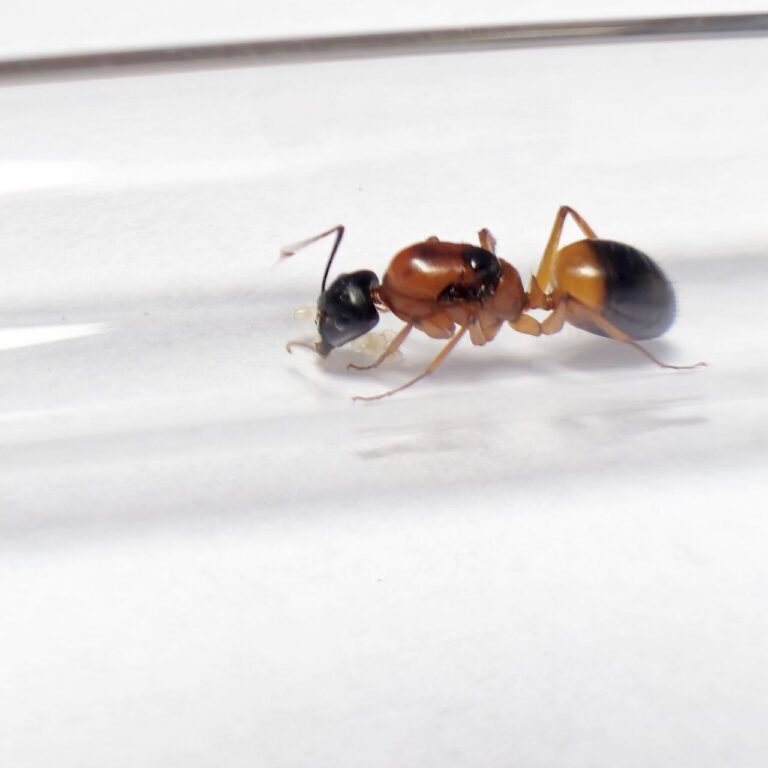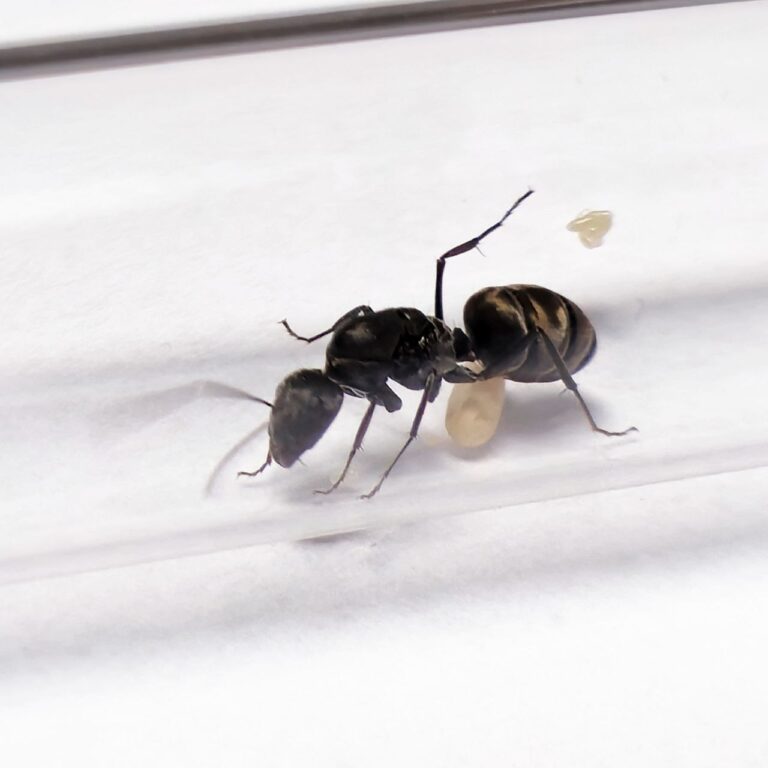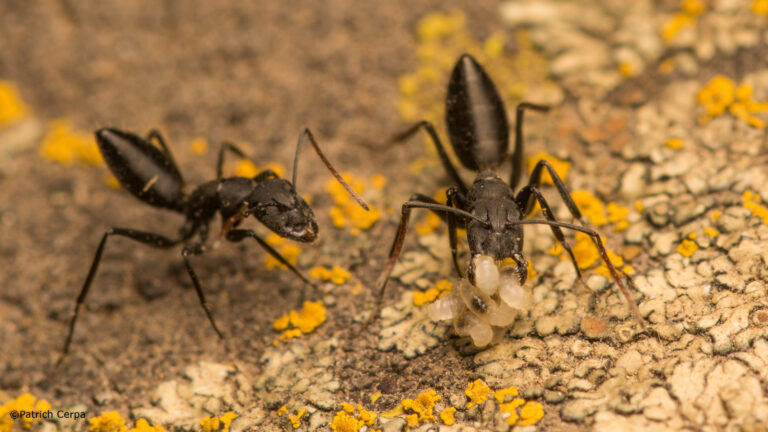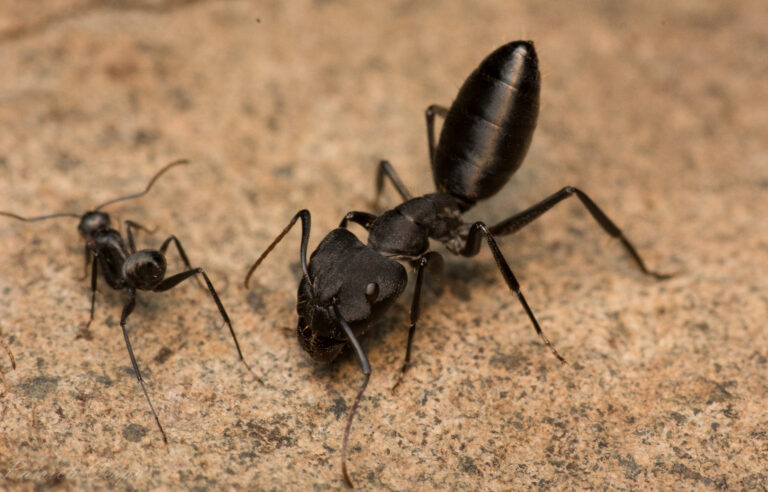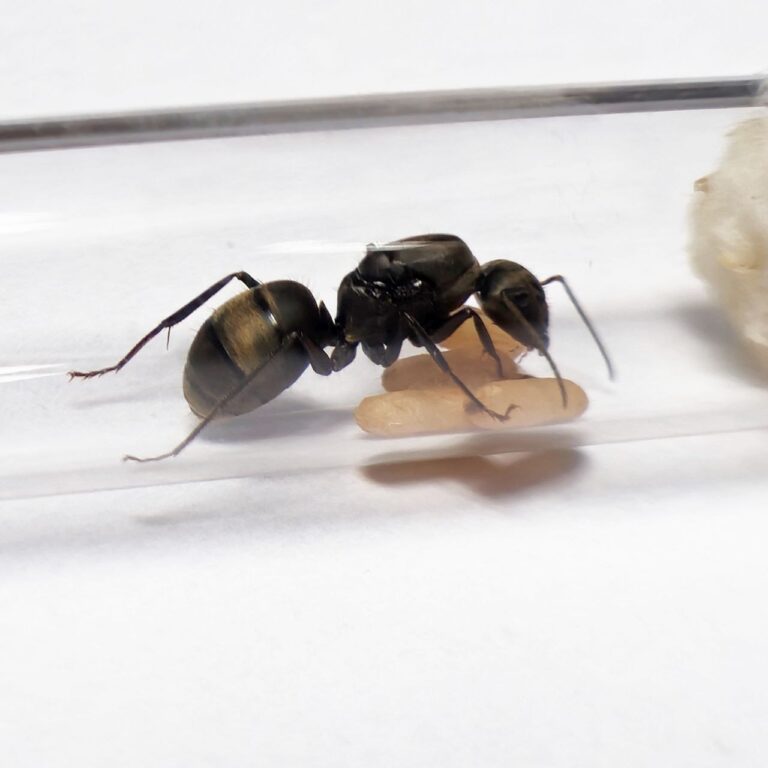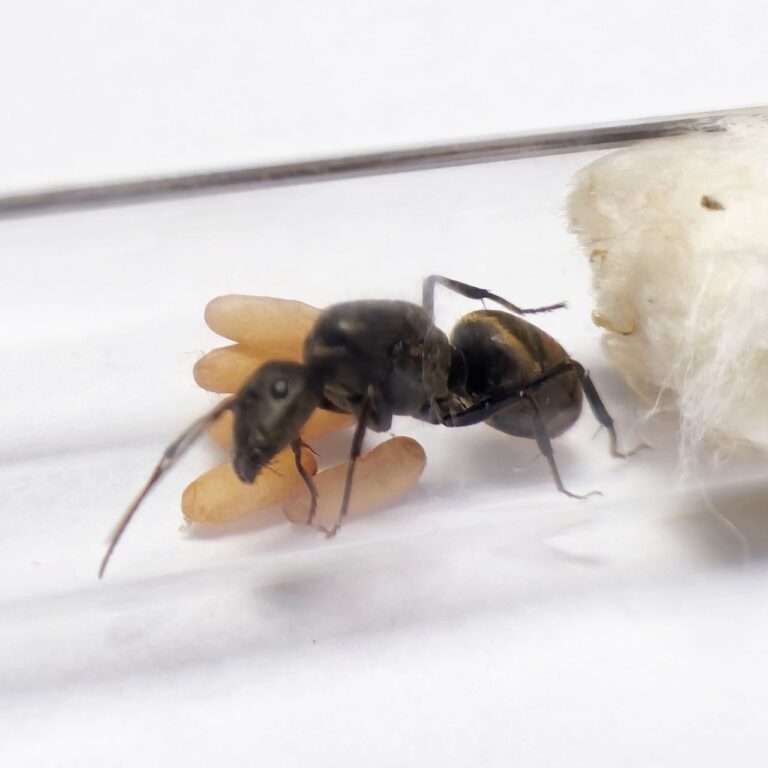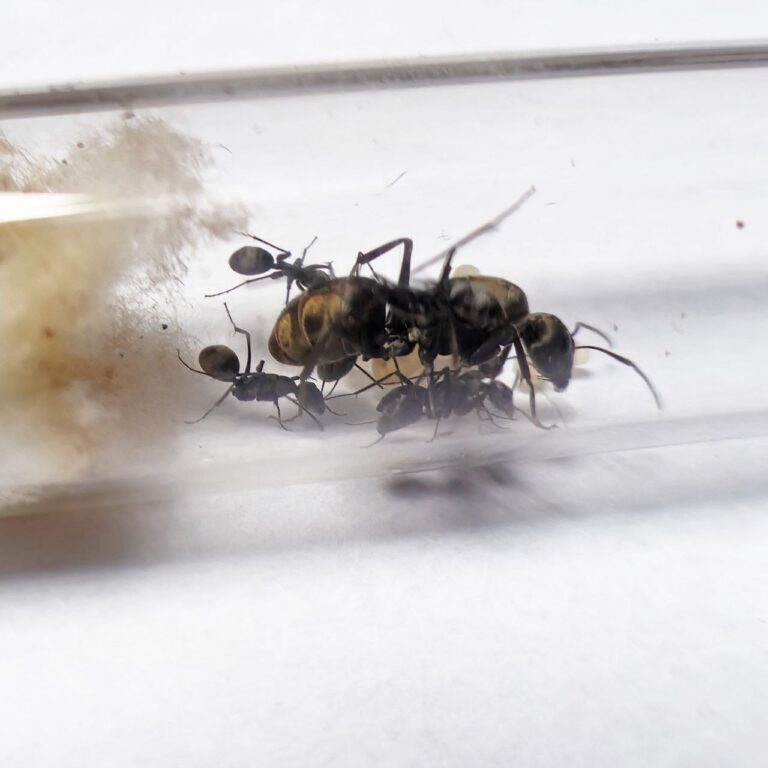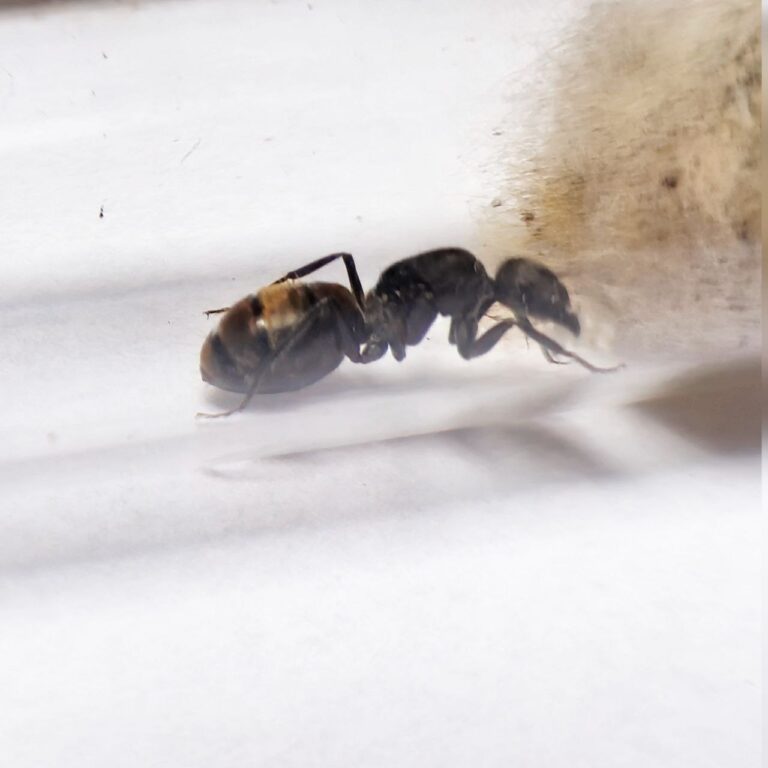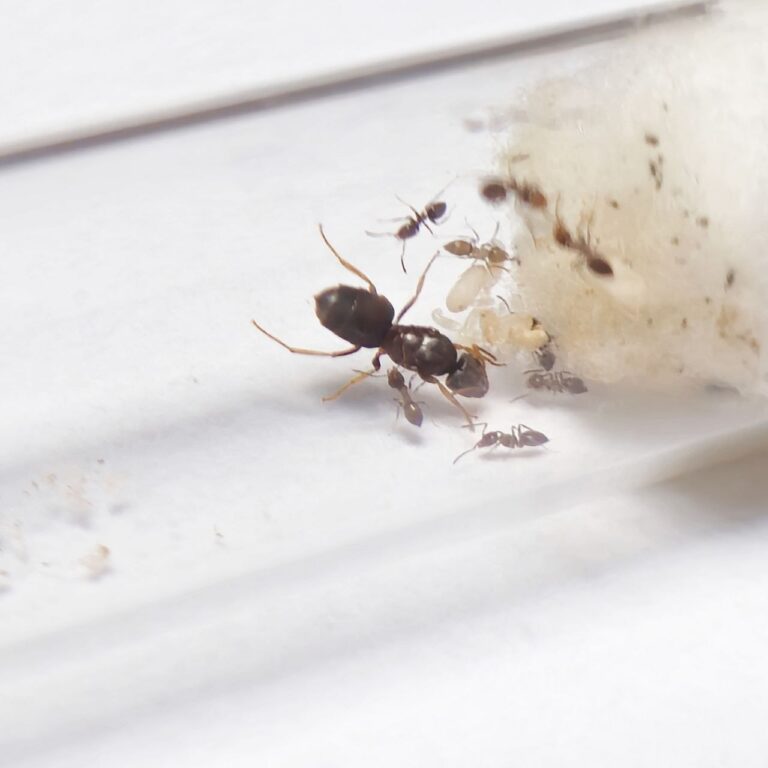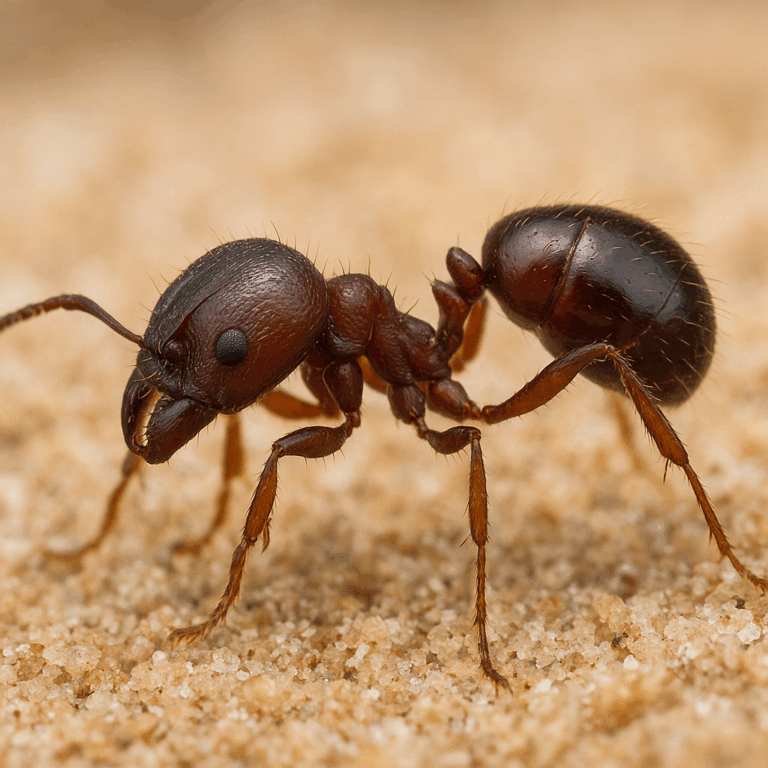Showing all 9 results
Product categories
Stock status
Filter by price
Behavior
Number of workers
Origin
Filter by size
Wintering
Camponotus consobrinus
559,90 zł – 669,90 złCamponotus consobrinus is a monogynous ant species with colonies reaching up to 20,000 workers. They exhibit a moderate to fast development speed. Queens typically measure around 16–18 mm in length, while workers range from 6 to 12 mm, showing noticeable polymorphism. This species is known for its striking appearance: the head and thorax are orange to reddish-brown, while the gaster is glossy black, creating a sharp bicolored contrast. They primarily feed on insect prey, sugary substances like honey-water or syrup, jelly, fruit, and protein-rich foods such as cooked chicken or egg.
Camponotus dolendus
189,90 zł – 359,90 złCamponotus dolendus is a monogynous ant species with colony sizes reaching up to 8,000–12,000 workers in mature nests. They are known for their moderate to fast development speed, depending on environmental conditions.
Camponotus morosus
599,90 zł – 1099,90 złCamponotus morosus is a monogynous ant species with colonies containing up to 10,000–15,000 workers. They develop at a moderate speed. Queens measure approximately 15–17 mm in length, while workers range from 6 to 9 mm. Their body exhibits a typical Camponotus contrast: the head and thorax are reddish-brown, while the gaster is dark brown to black.
Camponotus pseudolendus
249,90 zł – 489,90 złCamponotus pseudolendus is a monogynous ant species with colonies of up to 10,000 workers. They develop at a moderate to fast pace and show clear polymorphism. Queens typically measure around 17–19 mm, workers range from 5 to 11 mm, and majors can reach 12–14 mm.
Camponotus rufoglaucus
159,90 zł – 319,90 złCamponotus rufoglaucus is a monogynous ant species with colonies of up to 8,000–10,000 workers. They show moderate to fast development and strong polymorphism. Queens measure 16–18 mm, workers range from 5 to 10 mm, and majors can reach 12–14 mm.
Camponotus spinolae
599,90 zł – 1099,90 złCamponotus pseudolendus is a monogynous ant species with colonies of up to 10,000 workers. They develop at a moderate to fast pace and show clear polymorphism. Queens typically measure around 17–19 mm, workers range from 5 to 11 mm, and majors can reach 12–14 mm.
Camponotus tonkinus
599,90 zł – 1099,90 złCamponotus tonkinus is a monogynous ant species with colonies reaching up to 15,000 workers. They exhibit a moderate to fast development speed. The queen measures approximately 17–19 mm in length, while workers range from 6 to 9 mm. Their head and gaster are black, contrasting with a reddish-brown thorax, giving them a distinctive bicolored appearance. They feed primarily on insects, sugary liquids, fruit, jelly, and protein-rich foods such as cooked chicken or egg.
Lasius illyricus
33,90 zł – 129,90 złLasius illyricus is a calm, monogynous ant species forming medium-sized colonies. These ants thrive on a balanced diet of insects and sugars, build nests underground or under stones, and are easy to raise in soil-based formicaria. Great for beginner and intermediate keepers.
Messor desertus
199,90 złMessor desertus is a species of desert harvester ant from the genus Messor, adapted to arid environments. These ants specialize in collecting and storing seeds, which serve as their primary food source. Workers have strong mandibles for crushing hard seed shells, while queens are larger with an enlarged thorax, enabling flight during the mating season. Known for their organized social structure, they are highly efficient and resilient, thriving in extreme desert conditions.


